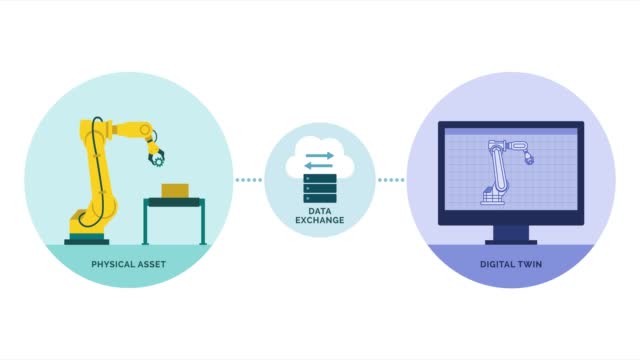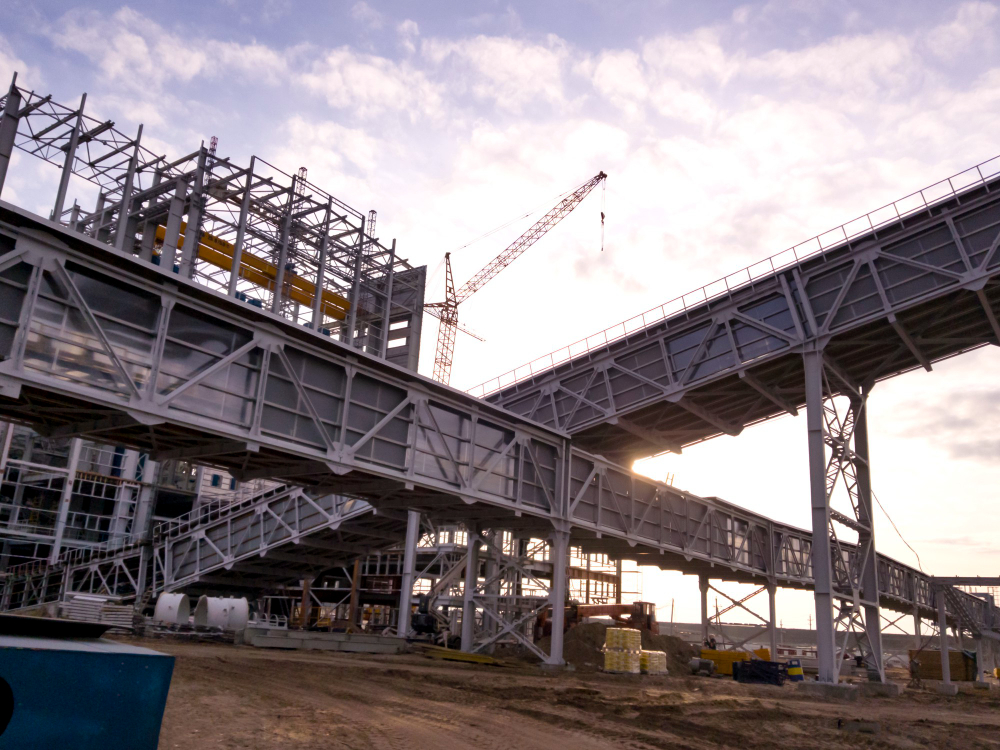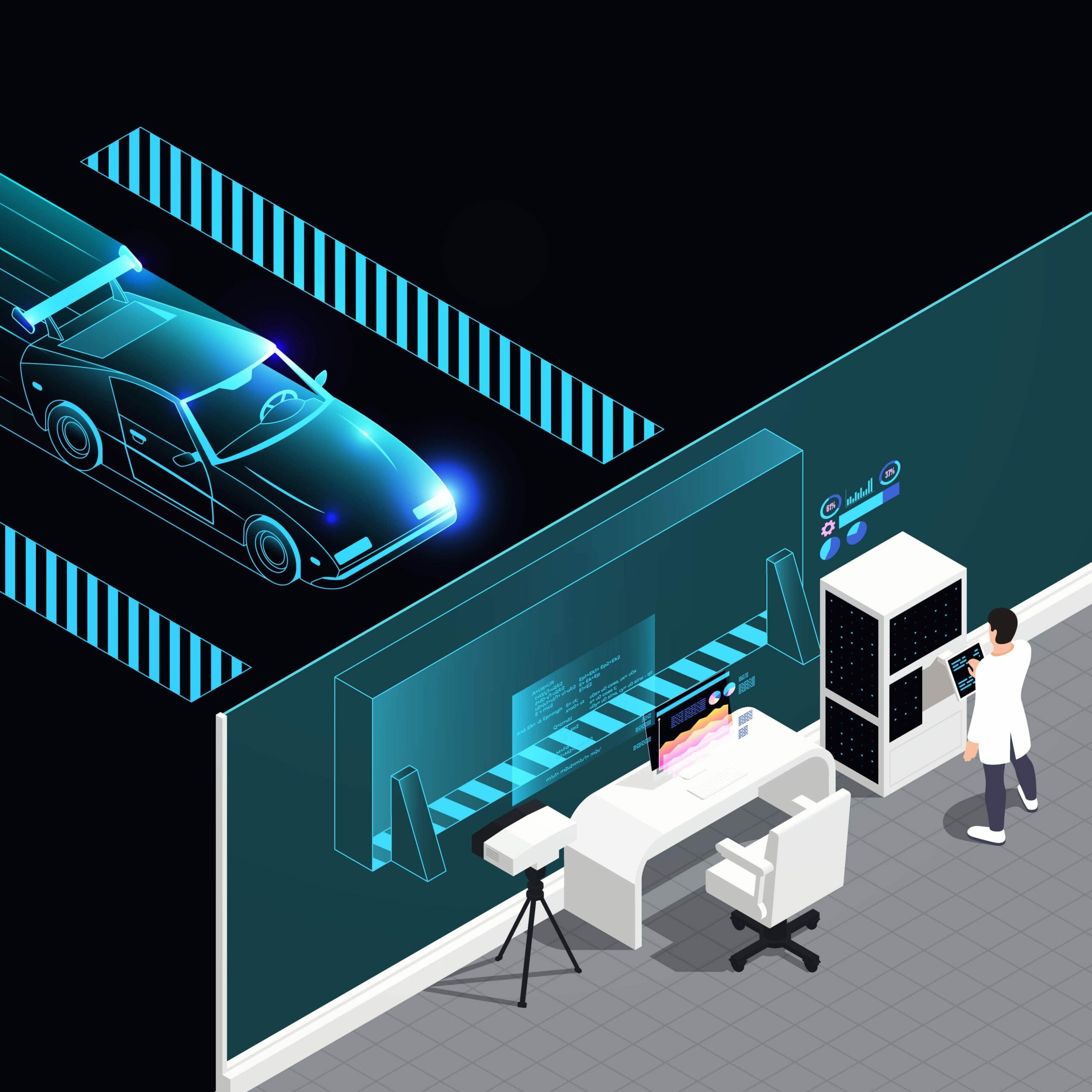
In the dynamic landscape of modern industry, the convergence of the physical and digital realms has become imperative. The intricate demands of a competitive market compel us to seek innovative solutions that seamlessly integrate the tangible and the virtual. So enter the era of Digital Twins, a revolutionary concept born out of the evolving complexities of production.
The genesis of the digital twin dates back to 2003, a pivotal moment when Michael Grieves introduced the concept during his product lifecycle management course at the University of Michigan [3]. Initially applied in military and aerospace contexts, digital twins have since evolved remarkably, finding applications across diverse sectors.
What are Digital Twins?
In the ever-evolving landscape of digital transformation and intelligent advancements, the concept of a digital twin emerges as a pivotal and indispensable technology.
Particularly, digital twins harnesses the power of data and sophisticated models to execute many functions, including monitoring, simulation, prediction, and optimization.
The Essence of Digital Twin Modeling
Central to the efficacy of the digital twin is its modelling, a process that intricately captures the essence of the physical entity it represents.
This accurate portrayal is not merely a visual replica but a dynamic framework that empowers the digital twin to provide functional services and meet the diverse requirements of its applications.
Comprehensive Analysis from Multiple Perspectives
To unravel the depth of digital twin modelling, our exploration begins with a holistic analysis, examining how these models function across various realms.
From the nuanced application fields to the intricate hierarchy and the diverse disciplines to the multi-dimensional aspects, we dissect the intricate layers contributing to the robustness of digital twin models.
Systematic Classification and Analysis
Building upon our understanding, we classify and analyze current studies on digital twin modelling according to six crucial aspects within the theoretical system proposed in our prior work.
This structured approach allows us to navigate the expansive landscape of digital twin modelling, providing valuable insights into its evolving nature.
Enabling Technologies and Tools
Behind the scenes, enabling technologies and tools play a pivotal role in bringing digital twin models to life. In this section, we investigate and summarize the technological underpinnings that empower the creation and implementation of digital twin models.
Types of Digital Twins

In the realm of digital twins, a diverse array of types coexists, each serving a unique purpose and contributing to the holistic understanding of complex systems.
This section delves into the various types of digital twins, unraveling their distinct characteristics and the critical role they play in providing virtual representations.
Component Twins: Precision in Detail
Digital twin modelling in a single piece within a larger system, Component Twins, or Parts Twins, offers a detailed representation of essential assets.
Think of them as the microscopic view, honing in on specific components such as a motor in a wind turbine. Therefore this level of granularity allows for precise monitoring and optimization.
Asset Twins: Synergy in Action
Expanding beyond individual components, Asset Twins step into the realm of interconnectedness. In the language of the twins, assets encompass two or more components working harmoniously as part of a comprehensive system.
Moreover, asset Twins virtually portray how these components interact, generating performance data for informed decision-making.
System Twins: Bridging the Gaps
System Twins show how different assets collaborate within a broader system, providing a wider perspective.This level of abstraction offers visibility into the interplay between components, guiding decisions for performance enhancements and efficiency improvements.
Process Twins: The Holistic Picture
At the summit of digital twin sophistication, Process Twins provide a holistic digital environment of an entire object. This includes insights into how various components, assets, and units collaboratively function.
For instance, a digital Process Twin can replicate the entire operational landscape of a manufacturing facility, offering a comprehensive view for analysis and optimization.
Harmony in Diversity: Leveraging Multiple Digital Twins
It’s important to note that these digital twin types can seamlessly coexist within the same system, each contributing its unique perspective. While some focus on minute details, others provide a panoramic view, collectively ensuring a thorough virtual representation.
How Does Digital Twin Technology Work?

Digital twins merge physical and digital realms, offering a captivating journey in modern technology’s dynamic landscape.
Let’s explore the intricacies of how a digital twin works and the technologies that empower its transformative capabilities.
Digital Replication for Real-world Insight
At its essence, a digital twin creates a precise digital replica of a physical asset within a virtual environment. This replication extends beyond a mere visual representation, encapsulating the asset’s functionality, features, and behaviour.
The real-time digital representation is crafted using intelligent sensors that actively collect operational data from the physical product. The digital twin provides insights from product testing to decommissioning, across the asset lifecycle.
Technological Pillars of Digital Twins
Digital twin leverage cutting-edge technologies to construct a robust digital model of the physical asset. The key technologies shaping this digital evolution include:
Internet of Things (IoT):
- Connecting the Physical and Digital: IoT forms a collective network of connected devices, enabling seamless communication between devices, the cloud, and among the devices themselves.
- Sensor Data Transmission: The Digital twin concept relies on IoT sensor data to bridge the gap between the real-world object and its digital representation. This data is transmitted to a software platform or dashboard, providing real-time updates.
Artificial Intelligence (AI) and Machine Learning (ML):
- Cognitive Problem Solving: Artificial Intelligence addresses cognitive challenges associated with human intelligence, while ML develops statistical models and algorithms for tasks without explicit instructions.
- Processing Sensor Data: Digital twin technology employs AI and ML algorithms to process large quantities of sensor data, identifying patterns and providing invaluable insights into performance optimization, maintenance, emissions, and efficiencies.
Digital Twins vs. Simulations: Bridging the Gap
While the twins and simulations are virtual model-based representations, they differ significantly in scale and application. Simulations are typically confined to design and offline optimization, allowing designers to input changes and observe what-if scenarios. However, twins are interactive, real-time environments, offering comprehensive and dynamic asset representation for all.
Consider a car simulation as an example. While a new driver undergoes immersive training, learning the operations and facing real-world scenarios virtually, the scenarios are not linked to an actual physical car. However, a digital twin of the car is intricately linked to the physical vehicle, possessing in-depth knowledge about vital performance stats, past part replacements, potential issues observed by sensors, service records, and more.
Industries Embracing Digital Twins Technology
In the era of digital innovation, various industries are harnessing the transformative power of the twins to revolutionize their operations. Let’s delve into how it makes waves across diverse sectors, seamlessly integrating the physical and digital realms.
Construction: Building Tomorrow Digitally

Digital twins play a pivotal role in project planning in the construction industry. Construction teams utilize them to plan residential, commercial, and infrastructure projects meticulously.
Architects leverage 3D modeling combined with digital twin technology for comprehensive project planning. Additionally, they empower commercial building managers to monitor real-time and historical data, including temperature, occupancy, and air quality, enhancing occupant comfort.
Manufacturing: A Lifecycle of Digital Innovation
They are integral to the entire manufacturing lifecycle. A digital twin prototype allows constant equipment monitoring, from design and planning to ongoing maintenance. This includes detailed analysis of performance data, offering insights into specific parts or the overall functionality of manufacturing plants.
Energy: Optimizing Performance in Every Watt
In the energy sector, they serve as strategic tools for project planning and optimizing the performance and lifecycles of assets. Whether it’s offshore installations, refining facilities, or renewable energy, it contributes to efficient operations and informed decision-making.
Automotive: Driving Insights and Efficiency

The automotive industry embraces digital twins’ capabilities to create comprehensive digital models of vehicles. Beyond providing insights into the physical behavior of vehicles, they encompass software, mechanical, and electrical models.
Predictive maintenance becomes a valuable asset, as digital twins can proactively alert service centers or users to potential issues with component performance.
Healthcare: Transforming Patient Care Digitally
In healthcare, we can find diverse applications. Virtual twins of entire hospitals, healthcare facilities, labs, and even human bodies are created to model organs and run simulations. This enables healthcare professionals to gain insights into how patients respond to specific treatments, fostering personalized and effective healthcare advancements.
Benefits of a digital twin technology

Unlocking a realm of possibilities, they have been a transformative force across industries, innovating processes and outcomes. Let’s delve into the myriad advantages and benefits that companies enjoy by developing digital twins:
Precision in Research and Design
Digital twins modelling has redefined the landscape of research and development. The technology facilitates more effective exploration and design of products by generating abundant data on potential performance outcomes.
This wealth of information empowers companies to gain crucial insights, allowing for necessary product refinements even before the commencement of production.
Enhanced Efficiency Throughout the Lifecycle
The influence of digital twins extends beyond the initial design phase. Once a new product enters production, the twins continues to play a pivotal role. This virtual model act as mirrors, meticulously monitoring production systems.
The objective is clear: achieving and maintaining peak efficiency throughout the entire manufacturing process. Real-time data and insights contribute to agile decision-making, ensuring optimal performance.
Guiding Product End-of-Life Decisions
Even as products reach the end of their lifecycle, twins prove invaluable. Manufacturers face decisions regarding final processing, whether through recycling or alternative measures. Digital twin technology steps in to guide these choices.
Manufacturers can meticulously determine which materials can be harvested by leveraging digital twins, optimizing resource utilization and contributing to sustainable practices.
Leveraging Historical and Real-Time Data

The amalgamation of historical and real-time data within the digital twin ecosystem is a game-changer.
From understanding past performance trends to responding dynamically to current operational nuances, the twins offer a comprehensive view. This fusion of insights becomes a catalyst for informed decision-making, driving continuous improvement.
Precision in Digital Modeling and Prototyping
The journey from concept to prototype is streamlined through the twins. The ability to create a digital twin prototype allows for precise modeling and prototyping, enabling thorough testing and refinement before physical production commences. This not only reduces development costs but also accelerates time-to-market.
Enabling Smart Decision-Making with AI and Machine Learning
The amalgamation of AI and ML amplifies the capabilities of the twins. These technologies process vast quantities of data, extracting meaningful patterns and insights.
The result is a digital ecosystem that empowers smart decision-making across various facets, from performance optimization to predictive maintenance.
Conclusion
The journey through the intricacies of the twins has unveiled a world where precision meets innovation. From Component Twins offering microscopic insights to Process Twins providing a holistic view, these digital replicas seamlessly coexist, contributing to a comprehensive understanding of complex systems.
In conclusion, the power of the digital twin extends beyond mere technology; it signifies a paradigm shift in how we perceive, interact with, and optimize the physical world.
As we gaze towards the future, the transformative potential of the twins beckons, promising a journey of innovation, efficiency, and digital precision across industries. The era of the twins is not just a technological evolution; it’s a revolution reshaping the landscape of possibilities.
Contact TechAhead today for all your web and mobile app development needs.



